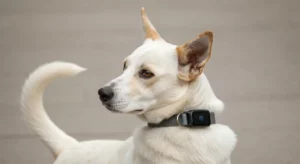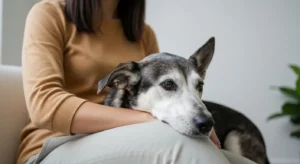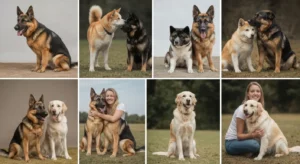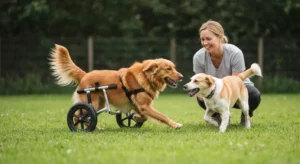As a veterinarian with over a decade of experience in emergency practice, I’ve treated countless pets for accidental poisonings. While these situations are always frightening, the most heartbreaking are the ones that could have been easily prevented. Many well-meaning owners share their own meals and snacks, unaware that some of our favorite foods can be devastatingly toxic to our four-legged family members.
Our pets’ bodies are not built like ours. Their metabolism, organ function, and digestive systems are unique, making them highly susceptible to toxins found in everyday human foods. This guide is designed to cut through the confusion and provide you with a clear, authoritative list of the most dangerous food no-no’s for pets. Understanding these risks is the first and most critical step in safeguarding your beloved companion’s health. Let’s make your home the safest place it can be.
-
Food No-No #1: Chocolate
The Danger: This is perhaps the most well-known toxic food for dogs, but it’s just as dangerous for cats. All forms of chocolate—from white to dark to baker’s chocolate—pose a threat.
The ‘Why’: Chocolate contains two toxic stimulants from the methylxanthine family: theobromine and caffeine. Pets metabolize these substances far more slowly than humans do, allowing them to build up to toxic levels in their system. This overstimulates their central nervous system and heart muscle. The danger level depends on the type of chocolate (darker and more bitter varieties like baker’s chocolate and cocoa powder are the most toxic) and the size of your pet. Even a small amount can cause serious problems.
What to Do & What to Feed Instead:
If Ingested: Contact your veterinarian or the ASPCA Animal Poison Control Center immediately. Note the type of chocolate, the amount consumed, and your pet’s weight. Signs of toxicity include vomiting, diarrhea, extreme thirst, panting, restlessness, a racing heart rate, and in severe cases, seizures and heart failure. Do not wait for symptoms to appear.
Safe Alternative: If you want to give your pet a chocolate-like treat, look for products made with carob. Carob is a pet-safe substitute that has a similar look and taste but contains none of the toxic stimulants found in chocolate. -
Food No-No #2: Grapes and Raisins
The Danger: A handful of grapes or raisins might seem like a harmless, healthy treat, but they are one of the most serious food no-no’s for pets, particularly dogs. Even a single grape can be lethal.
The ‘Why’: The exact toxic substance within grapes and raisins is still unknown to veterinary science, but the effect is devastatingly clear: ingestion can cause sudden, acute kidney failure. The toxicity doesn’t seem to be dose-dependent, meaning even one or two can cause a severe reaction in some dogs, while others might eat more with no apparent effect. Because the risk is so unpredictable and severe, it is critical to avoid them entirely. This applies to all grapes and raisins, regardless of color or whether they are seedless or organic.
What to Do & What to Feed Instead:
If Ingested: This is a true medical emergency. Contact your veterinarian immediately, even if your pet seems fine. Your vet will likely induce vomiting and start aggressive IV fluid therapy to try and flush the toxin and protect the kidneys. Early and aggressive treatment is the key to a better prognosis.
Safe Alternative: For a sweet, fruity treat, offer your pet small pieces of blueberries, strawberries, or apple slices (with the core and seeds removed, as apple seeds contain cyanide). -
Food No-No #3: Xylitol (Artificial Sweetener)
The Danger: Xylitol is an artificial sweetener that is extremely toxic to dogs. It is found in an ever-growing list of products, including sugar-free gum, candy, baked goods, toothpaste, some medications, and, most alarmingly, certain brands of peanut butter.
The ‘Why’: In humans, xylitol does not stimulate the release of insulin. In dogs, however, the body mistakes it for real sugar, causing the pancreas to release a massive amount of insulin. This leads to a rapid and profound drop in blood sugar (hypoglycemia), which can occur within 10 to 60 minutes of ingestion. This state can quickly lead to seizures, collapse, and can be fatal. In higher doses, xylitol can also cause severe, irreversible liver failure.
What to Do & What to Feed Instead:
If Ingested: Seek immediate veterinary care. This is a life-threatening emergency. If you are more than 30 minutes from a vet, they may advise you to rub corn syrup or maple syrup on your dog’s gums to temporarily raise their blood sugar on the way to the clinic.
How to Avoid: Become a vigilant label-reader. Always check the ingredients list on products like peanut butter, yogurt, and sugar-free snacks before sharing. Choose peanut butter that contains only peanuts (and maybe salt). There is no “safe” alternative for xylitol itself, only avoidance. -
Food No-No #4: Onions, Garlic, Chives, and Leeks
The Danger: All members of the Allium family are toxic to both dogs and cats, whether they are raw, cooked, powdered, or dehydrated.
The ‘Why’: These plants contain compounds called disulfides and thiosulphates, which cause oxidative damage to your pet’s red blood cells. This damage can lead to a condition called hemolytic anemia, where the red blood cells rupture, leaving your pet unable to transport oxygen effectively. Garlic is considered about five times more potent than onions. While a tiny, accidental exposure might not cause issues, repeated small doses (like from table scraps seasoned with onion or garlic powder) or a single large ingestion can be very dangerous. Cats are especially sensitive.
What to Do & What to Feed Instead:
If Ingested: Signs of toxicity might be delayed for several days and include weakness, lethargy, pale gums, an elevated heart rate, and reddish or orange urine. Contact your vet if you know your pet has eaten any of these foods. Treatment may involve hospitalization for blood monitoring, IV fluids, and in severe cases, a blood transfusion.
Safe Alternative: When cooking for your pet or sharing unseasoned meat, ensure it has not been cooked with any of these ingredients. For a savory flavor boost in homemade pet treats, you can use a small amount of pet-safe bone broth (with no onion or garlic added). -
Food No-No #5: Cooked Bones
The Danger: It’s a classic image: a dog happily chewing a bone. But giving your pet cooked bones from your steak, chicken, or ribs is a major food no-no that can lead to a veterinary emergency.
The ‘Why’: The cooking process makes bones brittle. When a pet chews on them, they can easily splinter into sharp shards. These shards can cause a host of serious problems, including: choking, broken teeth, cuts to the mouth and tongue, and life-threatening punctures of the esophagus, stomach, or intestines. Bone fragments can also cause a severe blockage (obstruction) that requires emergency surgery to resolve.
What to Do & What to Feed Instead:
If Ingested: If you see your pet choking, try to carefully remove the bone if possible. If they have swallowed a cooked bone, monitor them closely for signs of distress like vomiting, straining to defecate, lethargy, or abdominal pain. Contact your vet immediately if you notice any of these symptoms.
Safe Alternative: If you want to offer a bone, choose a raw, edible bone that is appropriately sized for your dog (large enough that it can’t be swallowed whole). However, even raw bones carry risks, so always supervise your pet. For a safer chew, opt for durable nylon chew toys or veterinary-approved dental chews designed to help clean teeth without the risk of splintering. -
Food No-No #6: Alcohol
The Danger: Alcoholic beverages and foods containing alcohol can be very dangerous for pets. Their smaller size and different metabolism make them highly susceptible to alcohol poisoning.
The ‘Why’: A pet’s liver is not equipped to process alcohol. Ingestion affects the central nervous system and can cause a dangerous drop in blood sugar, blood pressure, and body temperature. Even a small amount of alcohol can lead to intoxication, which for a pet manifests as vomiting, diarrhea, disorientation, difficulty breathing, tremors, and in severe cases, coma or death from respiratory failure. Remember that alcohol is also present in some surprising places, like unbaked yeast dough, desserts, and mouthwash.
What to Do & What to Feed Instead:
If Ingested: Never leave alcoholic drinks unattended where pets can reach them. If you suspect your pet has consumed alcohol, treat it as a medical emergency and contact your vet immediately. There is no home remedy.
Safe Alternative: There is no safe way for your pet to consume alcohol. Instead, ensure they always have access to a bowl of fresh, clean water. For a special “drink,” consider pet-safe bone broth or goat’s milk formulated for pets. -
Food No-No #7: Macadamia Nuts
The Danger: While many nuts are not ideal for pets due to their high fat content, macadamia nuts are specifically and uniquely toxic, primarily to dogs.
The ‘Why’: The mechanism of toxicity is not fully understood, but the effects are well-documented. Ingesting even a small number of macadamia nuts can cause a frightening, though usually temporary, set of symptoms. The primary impact is on the nervous system and muscles, leading to weakness (especially in the hind legs), depression, vomiting, tremors, and hyperthermia (elevated body temperature). Symptoms typically appear within 12 hours of ingestion.
What to Do & What to Feed Instead:
If Ingested: Call your veterinarian right away. While the condition is rarely fatal and most dogs recover fully with supportive care (like IV fluids and pain management), veterinary intervention is crucial to manage symptoms and prevent complications.
Safe Alternative: It’s best to avoid giving your pets nuts in general. If you use a nut butter, stick to xylitol-free peanut butter. For a crunchy, safe treat, offer baby carrots, green beans, or commercially available pet biscuits. -
Food No-No #8: Unbaked Yeast Dough
The Danger: If you’re a baker, be extremely careful with raw bread or pizza dough. If a pet ingests it, it can lead to two separate, life-threatening emergencies.
The ‘Why’: First, the warm, moist environment of a pet’s stomach is the perfect incubator for yeast. The dough will continue to rise and expand, causing the stomach to stretch painfully and dangerously. This can lead to a condition called Gastric Dilatation-Volvulus (GDV), or bloat, where the stomach twists on itself, cutting off blood supply. This is a surgical emergency. Second, as the yeast ferments, it produces ethanol (alcohol) as a byproduct. This alcohol is absorbed directly into the bloodstream, leading to alcohol poisoning (as discussed in point #6).
What to Do & What to Feed Instead:
If Ingested: This is a critical emergency. Rush your pet to the nearest emergency veterinarian. The combination of bloat and alcohol poisoning can be rapidly fatal.
Safe Alternative: Keep all rising dough well out of reach of your pets. If you want to give them a bread-like treat, a small piece of fully baked, plain bread is generally safe, though it offers little nutritional value and should only be an occasional snack. -
Food No-No #9: Caffeine
The Danger: Similar to its relative theobromine in chocolate, caffeine is a powerful stimulant that can be very harmful to pets. Sources include coffee (beans and grounds), tea (bags and leaves), sodas, energy drinks, and even some diet pills or headache medications.
The ‘Why’: Pets are far more sensitive to the effects of caffeine than we are. It causes a significant increase in heart rate (tachycardia), hyperactivity, and overstimulation of the central nervous system. A small lick of coffee is unlikely to cause issues, but ingesting coffee grounds, tea bags, or a single diet pill can be enough to cause serious toxicity in a small dog or cat.
What to Do & What to Feed Instead:
If Ingested: Signs of caffeine poisoning include restlessness, rapid breathing, heart palpitations, and muscle tremors or seizures. Contact your vet or poison control immediately. Treatment involves managing the symptoms, often with IV fluids and medications to control the heart rate and neurological signs.
How to Avoid: Securely dispose of coffee grounds and tea bags in a pet-proof trash can. Keep all caffeinated beverages and medications stored safely out of reach. -
Food No-No #10: Fatty and Fried Foods
The Danger: Sharing rich, fatty foods like bacon, sausage, fried chicken, or fatty meat trimmings can lead to a severe and painful medical condition.
The ‘Why’: A sudden influx of high-fat food can overwhelm and inflame the pancreas, the organ responsible for producing digestive enzymes. This condition is called pancreatitis. It is incredibly painful and can range from mild to life-threatening. The inflammation can also lead to damage to other nearby organs. Some dog breeds, like Miniature Schnauzers, are particularly prone to this condition. Chronic consumption of fatty foods can also lead to obesity and its associated health problems.
What to Do & What to Feed Instead:
If Ingested: Symptoms of pancreatitis include repeated vomiting, severe abdominal pain (your pet may adopt a “praying” position with their rear end in the air), diarrhea, loss of appetite, and lethargy. If you notice these signs, especially after your pet ate something fatty, seek immediate veterinary care. Treatment almost always requires hospitalization for IV fluids, pain control, and anti-nausea medication.
Safe Alternative: Stick to treats designed for pets. If you want to share human food, offer small pieces of lean, cooked meat (like chicken breast or turkey) that has been prepared without any oil, butter, or seasonings. This provides the protein they love without the dangerous fat content.
Keeping your pet safe is one of the greatest responsibilities of ownership. By being mindful of these common food no-no’s for pets, you can prevent a tragic accident. Always secure your food, pantry, and trash cans. If you ever suspect your pet has eaten something toxic, don’t hesitate—your veterinarian is your best resource for immediate, life-saving advice.












